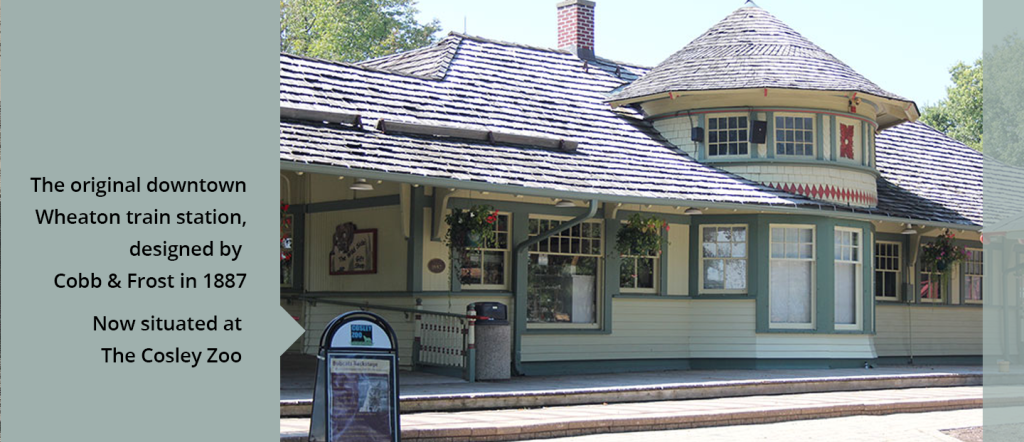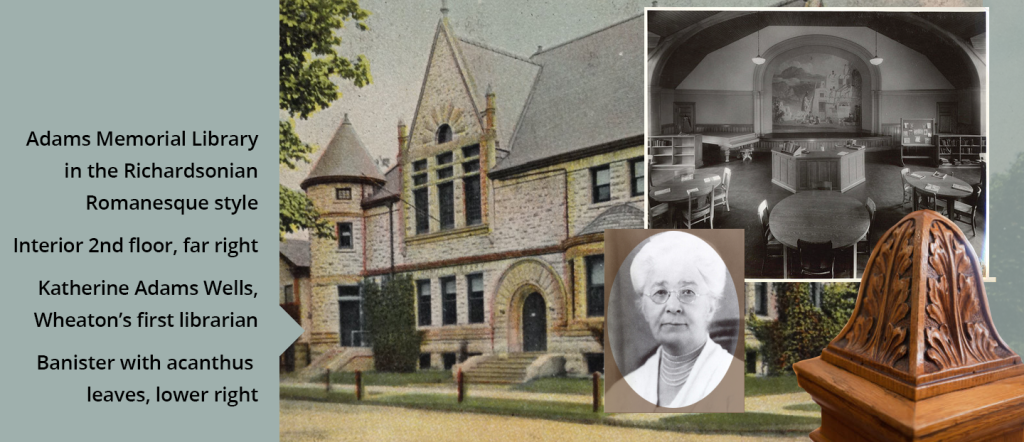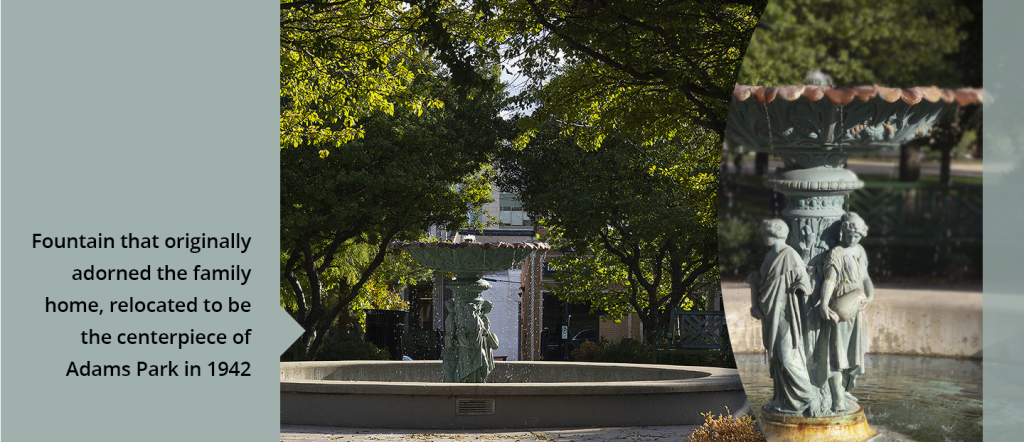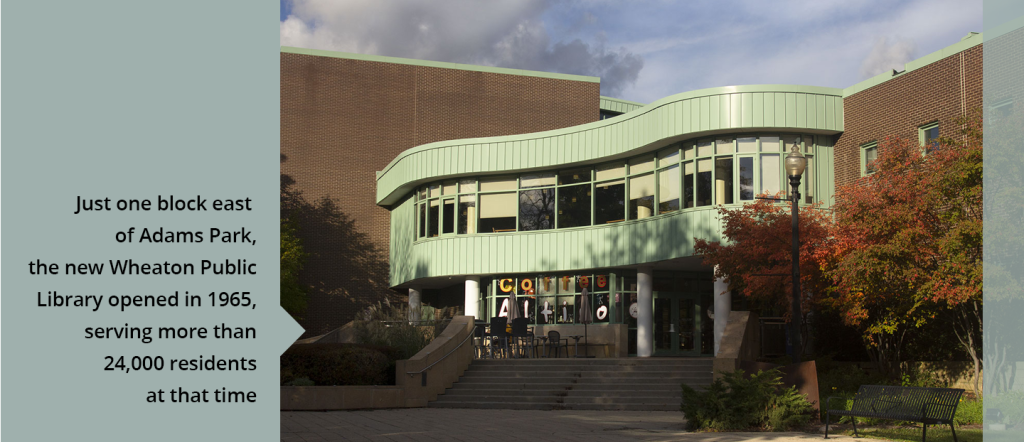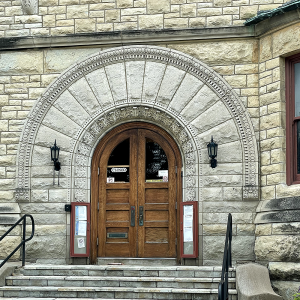In 1888, he built a stately home in the Queen Anne style on the square block of land which is now Adams Park, at the corner of Main and Wesley Sts., just west of today’s Wheaton Public Library. Placed in front of the home was the fountain that now sits in the middle of Adams Park.
His plans for Wheaton were just beginning. In October of 1890, he broke ground on a new project. It was envisioned as a library and community center—dedicated to Marilla—across the street from his home. On the main floor, it was to have a collection of books and quiet reading areas. The second floor was to accommodate other community gatherings and performances.
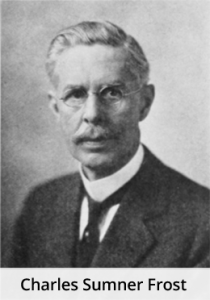 For this ambitious project, he selected architect Charles Sumner Frost. This would be Frost’s first solo project. Together with his partner, Henry Ives Cobb, they had created the Potter Palmer Mansion and the Chicago Opera House Block. They also built the railroad station in downtown Wheaton, in 1887. (This same station now sits in one of our other “Hidden Gems,” the Cosley Zoo. It houses administrative offices, a gift shop and concessions for the zoo.)
For this ambitious project, he selected architect Charles Sumner Frost. This would be Frost’s first solo project. Together with his partner, Henry Ives Cobb, they had created the Potter Palmer Mansion and the Chicago Opera House Block. They also built the railroad station in downtown Wheaton, in 1887. (This same station now sits in one of our other “Hidden Gems,” the Cosley Zoo. It houses administrative offices, a gift shop and concessions for the zoo.)
Frost utilized this impressive experience and his architectural talent to produce the new Adams Memorial Library. The project took just over a year to complete. It was a wonderful, free resource for the 3,000 citizens of Wheaton. Adams’ daughter, Katherine, became Wheaton’s first librarian. She introduced the Dewey Decimal System to the facility, making it one of the first libraries in Illinois to use the new organizational method.
As far as the architecture, the library was done in Richardsonian Romanesque style. Named after the architect Henry Hobson Richardson, the concept for this style was to incorporate classical elements while allowing the beauty of natural elements to shine through. For this reason, the style is often seen in religious and civic structures. These buildings often incorporate very textured stone blocks set in a way to emphasize horizontal lines. Other common features include towers, rounded arches, and highly-detailed ornamentation. Another example of this style in Wheaton is the old County Courthouse—now, residences at Courthouse Square.
The Adams Memorial Library embodied the Richardsonian Romanesque style, evidenced by its rock-faced limestone, red slate roof (originally), circular staircase tower, and tall, stone gables. The gables each feature thin upright spires, called pinnacles, and an arched window. Dentil moldings adorn the eaves of the gables. Carving, too, was used in this magnificent structure. Local Wheaton artist, Alvin Austin, carved the decorative stone, arched entryway. The beauty of natural elements, such as oak and stone, bring warmth to the space. Acanthus leaves, symbols of quality, longevity, and creativity, are also used as a motif inside and out.
When completed, in 1891, the building was a true masterpiece. It housed 2,700 books with private reading rooms on the main level. The second floor featured a Steinway Concert Grand Piano and an auditorium with seating for an audience up to 500 people. Corinthian columns, featuring the acanthus leaves, stand proud on either side of the stage. Mr. Adams and Mr. Frost had created a treasure for Wheaton!
The Adams Memorial Trust allowed the library to operate for thirty-two years. At that time, in 1923, the City of Wheaton voted to continue to fund this important community resource.

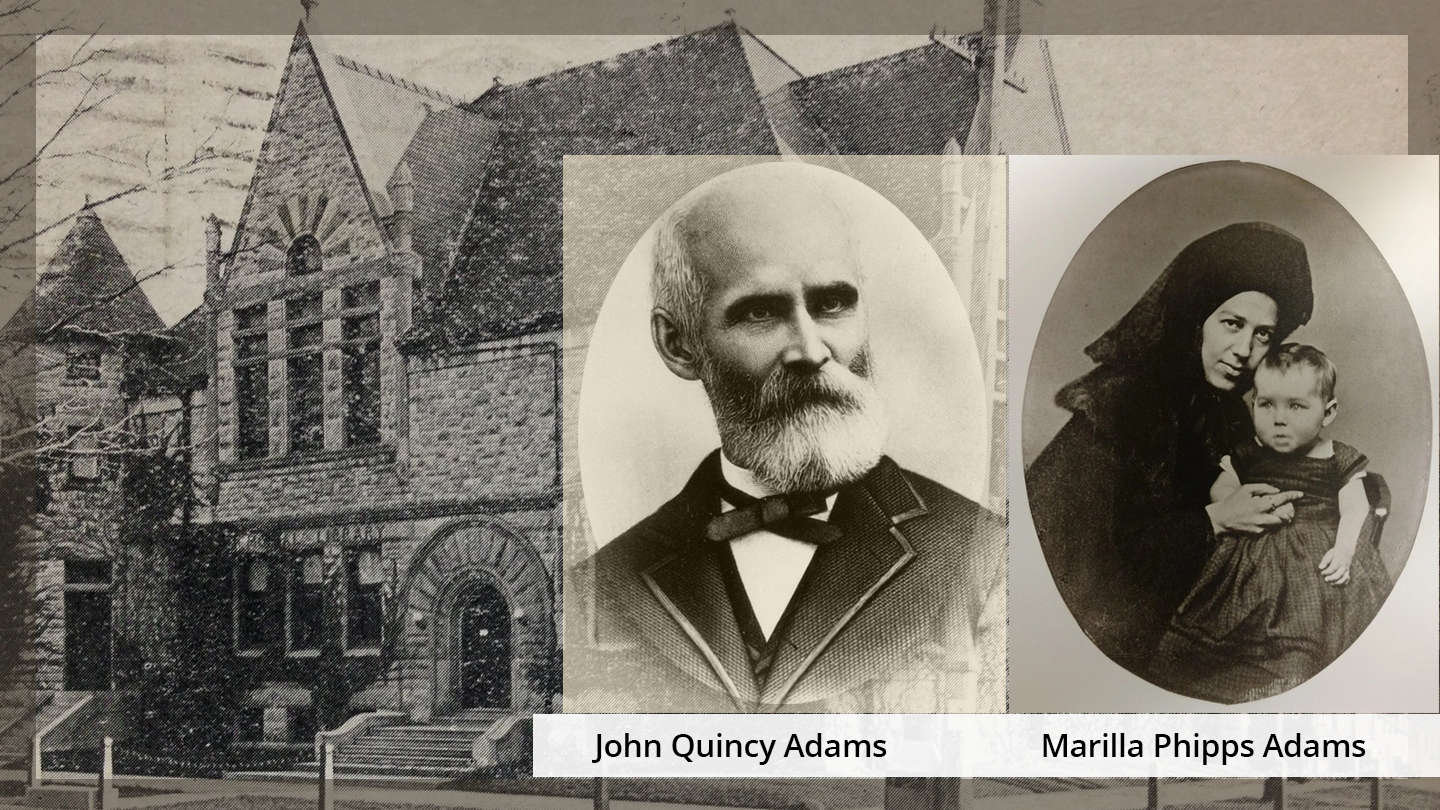
 For this ambitious project, he selected architect Charles Sumner Frost. This would be Frost’s first solo project. Together with his partner, Henry Ives Cobb, they had created the Potter Palmer Mansion and the Chicago Opera House Block. They also built the railroad station in downtown Wheaton, in 1887. (This same station now sits in one of our other “Hidden Gems,” the
For this ambitious project, he selected architect Charles Sumner Frost. This would be Frost’s first solo project. Together with his partner, Henry Ives Cobb, they had created the Potter Palmer Mansion and the Chicago Opera House Block. They also built the railroad station in downtown Wheaton, in 1887. (This same station now sits in one of our other “Hidden Gems,” the 